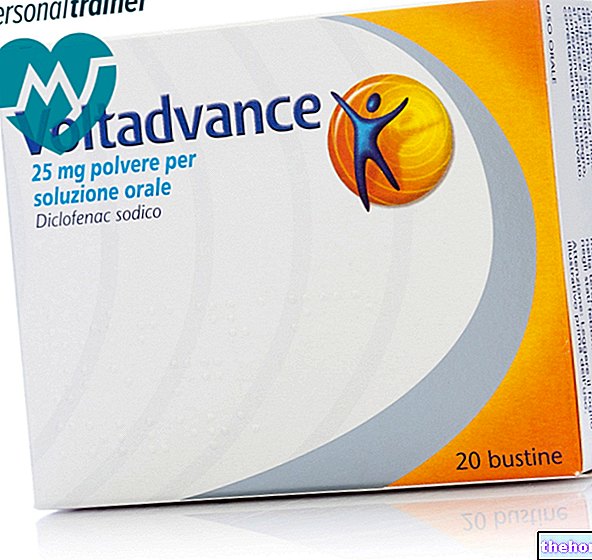Active ingredients: Tranexamic acid
TRANEX 500 MG / 5 ML SOLUTION FOR INJECTION
Tranex package inserts are available for pack sizes:- TRANEX 500 MG / 5 ML SOLUTION FOR INJECTION
- Tranex 250 mg capsules, Tranex 500 mg capsules
Indications Why is Tranex used? What is it for?
TRANEX contains tranexamic acid, which belongs to a group of drugs called antihaemorrhagics, antifibrinolytics, amino acids.
TRANEX is used in adults and children from one year of age to prevent and treat bleeding due to a process that inhibits blood clotting called fibrinolysis. The specific indications are:
- heavy menstrual cycle;
- gastrointestinal bleeding;
- bleeding disorders of the urinary tract, following prostate surgery or urinary tract surgery;
- ear, nose or throat surgery;
- heart, abdomen or gynecological surgery;
- bleeding after treatment with other medicines to dissolve blood clots.
Contraindications When Tranex should not be used
Do not take TRANEX if you:
- you are allergic to tranexamic acid or any of the other ingredients of this medicine (listed in section 6);
- have a disease that leads to the formation of blood clots;
- have a condition called 'consumption coagulopathy' where blood begins to clot in different parts of the body;
- have kidney problems;
- have had seizures in the past.
Due to the risk of cerebral edema and seizures, intrathecal and intraventricular injection and intracerebral application are not recommended.
If you think any of these apply to you, or if you have any other questions, talk to your doctor before taking TRANEX.
Precautions for use What you need to know before taking Tranex
Tell your doctor if any of the following apply to you to help them decide if TRANEX is right for you:
- if you have noticed blood in your urine, this could be due to an obstruction in the urinary tract;
- if you are at risk for blood clots;
- if you have excessive clots or bleeding all over your body (disseminated intravascular coagulation), TRANEX may not be suitable for you, unless you have acute severe bleeding and your blood tests have shown that the process that inhibits blood clotting, called fibrinolysis, be activated;
- if you have had convulsions TRANEX should not be given. Your doctor should use the lowest possible dose to avoid seizures due to treatment with TRANEX;
- if you are on prolonged treatment with TRANEX you should be alert for possible disturbances in color vision and, if necessary, the treatment should be stopped. In case of prolonged use of TRANEX solution for injection, regular ophthalmological examinations are recommended (eye exams including visual acuity, color vision, fundus, field of vision, etc.). In case of pathological ophthalmological changes, in particular with retinal diseases, your doctor should decide, after consulting a specialist, on the need for prolonged use of TRANEX solution for injection in your case.
Interactions Which drugs or foods may change the effect of Tranex
Tell your doctor or pharmacist if you are taking or have recently taken any other medicines, including those without a prescription, vitamins, minerals, herbal medicines or dietary supplements. In particular you should tell your doctor if you take:
- other medicines that help blood clot called antifibrinolytics;
- medicines that prevent blood clotting called thrombolytics;
- oral contraceptives.
Warnings It is important to know that:
Pregnancy and breastfeeding
Ask your doctor for advice if you are pregnant or breast-feeding before taking TRANEX.
Tranexamic acid is excreted in breast milk, therefore the use of TRANEX is not recommended during breastfeeding.
Driving and using machines
No studies on the ability to drive and use machines have been performed.
Dose, Method and Time of Administration How to use Tranex: Posology
Use in adults
TRANEX solution for injection will be given to you as a slow injection into a vein.
Your doctor will decide on the right dose for you and how long you need to take it for.
Use in children
If TRANEX solution for injection is given to a child from one year of age, the dose will be calculated based on the child's weight. Your doctor will decide on the right dose for your child and how long you need to take it for.
Use in the elderly
There is no need to reduce the dose unless there is proven renal insufficiency.
Use in patients with kidney problems
If you have kidney problems, your dose of tranexamic acid will be reduced based on a blood test (serum creatinine level).
Use in patients with liver problems
There is no need to reduce the dose.
Method of administration
TRANEX must be administered slowly into a vein. TRANEX must not be injected into a muscle.
Overdose What to do if you have taken too much Tranex
If you are given more TRANEX than the recommended dose, you may have a transient drop in blood pressure. Tell your doctor or pharmacist immediately.
Side Effects What are the side effects of Tranex
Like all medicines, this can cause side effects, although not everybody gets them.
Side effects with TRANEX that have been reported are:
The following side effects have been observed with TRANEX
Common (may affect up to 1 in 10 patients)
- effects on the stomach and intestines: nausea, vomiting, diarrhea.
Uncommon (may affect 1 to 10 in 1000 patients)
- effects on the skin: rash.
Not known (frequency cannot be estimated from the available data)
- malaise with hypotension (low blood pressure), particularly if the injection was given too quickly;
- blood clots;
- effects on the nervous system: convulsions;
- effects on the eyes: visual disturbances including impaired color vision;
- effects on the immune system: allergic reactions.
Reporting of side effects
If you get any side effects, talk to your doctor or pharmacist. This includes any possible side effects not listed in this leaflet. You can also report side effects directly via the national reporting system at http://www.agenziafarmaco.gov.it/it/responsabili. By reporting side effects you can help provide more information on the safety of this medicine.
Expiry and Retention
This medicine does not require any special storage conditions.
Composition and pharmaceutical form
What TRANEX contains
Each 5 mL vial contains:
Active ingredient: 500 mg tranexamic acid
Excipients: sterile bidistilled water to taste a mL 5.
What TRANEX looks like and contents of the pack
Tranex 6 vials 5 ml
Each vial contains a clear and colorless solution
Source Package Leaflet: AIFA (Italian Medicines Agency). Content published in January 2016. The information present may not be up-to-date.
To have access to the most up-to-date version, it is advisable to access the AIFA (Italian Medicines Agency) website. Disclaimer and useful information.
01.0 NAME OF THE MEDICINAL PRODUCT
TRANEX 500 MG / 5 ML SOLUTION FOR INJECTION
02.0 QUALITATIVE AND QUANTITATIVE COMPOSITION
Each vial contains:
active principle
tranexamic acid 500 mg.
For the full list of excipients see section 6.1.
03.0 PHARMACEUTICAL FORM
Solution for injection for intravenous use.
04.0 CLINICAL INFORMATION
04.1 Therapeutic indications
Prevention and treatment of bleeding due to generalized or local fibrinolysis in adults and children from one year of age.
The specific indications are:
• bleeding caused by generalized or local fibrinolysis such as:
- menorrhagia and metrorrhagia,
- gastrointestinal bleeding,
- urinary bleeding disorders, following prostatic surgery or surgical procedures involving the urinary tract;
• ENT surgery (adenoidectomy, tonsillectomy, dental extractions);
• gynecological surgery or obstetric disorders;
• thoracic and abdominal surgery and other major surgeries such as cardiovascular surgery;
• management of bleeding due to administration of a fibrinolytic.
04.2 Posology and method of administration
Dosage
Adults
Unless otherwise prescribed, the following doses are recommended:
1. standard treatment of local fibrinolysis:
0.5 g (1 x 5 ml ampoule) to 1 g (1 x 10 ml ampoule or 2 x 5 ml ampoules) of tranexamic acid by slow intravenous injection (= 1 ml / minute) two or three times a day
2. standard treatment of generalized fibrinolysis:
1 g (1 ampoule of 10 ml or 2 ampoules of 5 ml) of tranexamic acid by slow intravenous injection (= 1 ml / minute) every 6-8 hours, equal to 15 mg / kg body weight.
Kidney failure
In case of renal insufficiency which may involve a risk of accumulation, the use of tranexamic acid is contraindicated in patients with severe renal insufficiency (see section 4.3). For patients with mild to moderate renal impairment, the dose of tranexamic acid should be reduced based on the serum creatinine level.
Hepatic insufficiency
No dose adjustments are required in patients with hepatic insufficiency.
Pediatric population
In children from one year of age, for the current approved indications described in section 4.1, the dose is around 20 mg / kg / day. However, there are few data on efficacy, posology and safety for these indications.
There are no comprehensive evaluations of the efficacy, posology and safety of tranexamic acid in children undergoing cardiac surgery. Currently available data are limited and are presented in section 5.1.
Senior citizens
There is no need to reduce the dose unless there is proven renal insufficiency.
Method of administration
Administration must compulsorily take place by slow intravenous injection.
04.3 Contraindications
Hypersensitivity to the active substance or to any of the excipients listed in section 6.1.
Acute venous or arterial thrombosis (see section 4.4).
Fibrinolytic conditions due to consumption coagulopathy except in cases where there is predominant activation of the fibrinolytic system with acute severe bleeding (see section 4.4).
Severe renal insufficiency (risk of accumulation).
History of seizures.
Intrathecal and intraventricular injection, intracerebral application (risk of cerebral edema and convulsions)
04.4 Special warnings and appropriate precautions for use
The above indications and method of administration must be strictly observed:
• Intravenous injections should be done slowly.
• Tranexamic acid must not be administered intramuscularly.
Convulsions
Cases of seizures have been reported in association with tranexamic acid treatment. In coronary artery bypass grafting (CABG) surgery, most cases have occurred following intravenous (IV) injection of high doses of tranexamic acid. with the lower recommended doses of tranexamic acid, the incidence of postoperative seizures was the same as in untreated patients.
Visual disturbances
Attention should be paid to possible visual disturbances, including visual impairment, blurred vision, impaired color vision and, if necessary, treatment should be stopped. In case of prolonged use of the tranexamic acid solution for injection, regular ophthalmological examinations are recommended (eye exams including visual acuity, color vision, fundus, visual field, etc.). In case of pathological ophthalmological changes, in particular with pathologies of the retina, the physician should decide, after consulting a specialist, on the need for prolonged use of tranexamic acid solution for injection in each individual case.
Hematuria
In case of upper urinary tract hematuria, there is a risk of urethral obstruction and mechanical anuria.
Thromboembolic events
Before using tranexamic acid, risk factors for thromboembolic disease should be considered. In patients with a history of thromboembolic disease or in those with a "high incidence of thromboembolic events in the" family history (patients at high risk of thrombophilia), Tranexamic acid solution for injection should only be administered if expressly indicated by the doctor, after consultation with an expert in haemostaseology and under close medical supervision (see section 4.3).
Tranexamic acid should be administered with caution in patients taking oral contraceptives due to the increased risk of thrombosis (see section 4.5).
Disseminated intravascular coagulation
Patients with disseminated intravascular coagulation (DIC) in most cases cannot be treated with tranexamic acid (see section 4.3). If a decision is made to administer tranexamic acid, this should only be done in patients in whom there is a "predominant activation of the fibrinolytic system with acute severe bleeding. Normally the haematological profile approaches the following: reduced time of lysis of the euglobulin clot; prolonged prothrombin time; decreased plasma levels of fibrinogen, factors V and VIII, plasminogen fibrinolysin and alpha-2 macroglobulin; normal plasma levels of the prothrombin complex, i.e. factors II (prothrombin), VIII and X; elevated plasma levels of fibrinogen breakdown products; normal platelet count. The above assumes that the underlying disease does not change. for itself the various elements of this profile. In these acute cases a single dose of 1 g of tranexamic acid usually or is it enough to control bleeding. The administration of tranexamic acid in DIC should only be considered if adequate haematological laboratory equipment is available and in the presence of expert personnel.
04.5 Interactions with other medicinal products and other forms of interaction
No interaction studies have been performed. Concomitant treatment with anticoagulants can only take place under the close supervision of a physician experienced in this field. Medicinal products acting on haemostasis should be administered with caution in patients treated with tranexamic acid. There is a theoretical risk of a potential increase in thrombus formation, as occurs with estrogen. Alternatively, the antifibrinolytic action of the drug can be antagonized with thrombolytic drugs.
04.6 Pregnancy and breastfeeding
Women of childbearing potential must use effective contraceptives during treatment.
Pregnancy
There are insufficient clinical data on the use of tranexamic acid in pregnant women. Consequently, even if animal studies do not report teratogenic effects, as a precaution for use, the use of tranexamic acid is not recommended during the first trimester of pregnancy. Limited clinical data on the use of tranexamic acid in various bleeding conditions during the second and third trimester of pregnancy have not reported a deleterious effect to the fetus. Tranexamic acid can be used during pregnancy only if the expected benefits justify the potential risk.
Pregnancy
Tranexamic acid is excreted in breast milk, therefore breastfeeding is not recommended.
Fertility
There are no clinical data on the effects of tranexamic acid on fertility.
04.7 Effects on ability to drive and use machines
No studies on the ability to drive and use machines have been performed.
04.8 Undesirable effects
Adverse drug reactions reported in clinical trials and on the basis of post-marketing experience are listed below by system organ class.
Table with the list of adverse reactions
Adverse reactions reported are included in the table below and are listed by MedDRA primary system organ class. Within each system organ class, adverse reactions are ranked by frequency. Within each frequency category, adverse reactions are listed in order of decreasing severity. Frequency categories are defined as follows: very common (≥1 / 10); common (≥1 / 100
Reporting of suspected adverse reactions
The reporting of suspected adverse reactions occurring after authorization of the medicinal product is important, as it allows continuous monitoring of the benefit / risk balance of the medicinal product. Healthcare professionals are asked to report any suspected adverse reactions via: www. Agenziafarmaco.gov.it/it/responsabili.
04.9 Overdose
No cases of overdose have been reported.
The signs and symptoms can be dizziness, headache, hypotension and seizures. Seizures have been shown to occur more frequently with increasing dose.
Management of overdose should consist of supportive care.
05.0 PHARMACOLOGICAL PROPERTIES
05.1 Pharmacodynamic properties
Pharmacotherapeutic group: antihaemorrhagics, antifibrinolytics.
ATC code: B02AA02.
Tranexamic acid has an anti-haemorrhagic activity by inhibiting the fibrinolytic properties of plasmin.
A complex is formed which includes tranexamic acid and plasminogen; tranexamic acid binds to plasminogen when it is transformed into plasmin.
The activity of the tranexamic acid-plasmin complex on fibrin activity is lower than the activity of free plasmin alone.
Education in vitro showed that high doses of tranexamic acid reduced complement activity.
Pediatric population
Children from one year old
In the literature, 12 efficacy studies in pediatric cardiac surgery were identified which included 1073 children, 631 treated with tranexamic acid. Most of the studies were placebo controlled. The population studied was heterogeneous in terms of age, type of surgery, and dosage regimens. Results from tranexamic acid studies indicate less blood loss and less need for blood products in pediatric cardiac surgery with cardiopulmonary bypass (CPB) when there is a high risk of bleeding, especially in cyanotic patients or in patients undergoing repeated surgical interventions. The most appropriate dosage schedule was found to be:
- first bolus of 10 mg / kg after induction of anesthesia and before skin incision,
- continuous infusion of 10 mg / kg / h or injection into the priming fluid of the CPB pump at a dose appropriate to the CPB procedure, or according to the patient's weight at a dose of 10 mg / kg, or according to the priming volume of the pump CPB, with the last injection of 10 mg / kg at the end of the cardiopulmonary bypass operation.
Although the studies involved a very limited number of patients, the few available data indicate that continuous infusion is preferable, as it maintained therapeutic plasma concentrations throughout surgery.
No specific dose-effect and pharmacokinetic studies have been performed in children.
05.2 Pharmacokinetic properties
Absorption:
The peak plasma concentrations of tranexamic acid is reached rapidly after a short intravenous infusion, after which the plasma concentrations decrease in a multi-exponential manner.
Distribution
The plasma protein binding of tranexamic acid is approximately 3% at therapeutic plasma levels and appears to be entirely due to its binding to plasminogen. Tranexamic acid does not bind to serum albumin. The initial volume of distribution is approximately 9-12 liters.
Tranexamic acid crosses the placenta. Following the administration of an intravenous injection of 10mg / kg to 12 pregnant women, the serum tranexamic acid concentration was between 10 and 53 mcg / ml, while that in the blood umbilical cord was between 4 and 31 mcg / ml. Tranexamic acid diffuses rapidly into the synovial fluid and synovial membrane. Following the administration of an intravenous injection of 10 mg / kg to 17 patients undergoing knee surgery, the concentrations in the synovial fluid were similar to those observed in the related serum samples. The concentration of tranexamic acid in a number of other tissues corresponds to a fraction of that observed in the blood (one hundredth in breast milk; one tenth in cerebrospinal fluid; one tenth in aqueous humor). Tranexamic acid was detected in semen, where it inhibits fibrinolytic activity but does not affect sperm migration.
Excretion
It is mainly excreted in the urine as unchanged drug. Urinary excretion via glomerular filtration is the major route of elimination. Renal clearance is equal to plasma clearance (110-116 ml / min). Tranexamic acid excretion is approximately 90% in the first 24 hours following intravenous administration of 10 mg / kg body weight. The half-life of tranexamic acid is approximately 3 hours.
Special populations
Plasma concentrations increase in patients with renal insufficiency.
No specific pharmacokinetic studies have been performed in children.
05.3 Preclinical safety data
Non-clinical data reveal no specific hazard in humans based on conventional studies of safety pharmacology, repeated dose toxicity, genotoxicity, carcinogenic potential and reproductive toxicity.
Epileptogenic activity was observed in the case of intrathecal use of tranexamic acid in animals.
06.0 PHARMACEUTICAL INFORMATION
06.1 Excipients
Vials:
water for injections q.s. to 5 ml.
06.2 Incompatibility
Tranex does not show chemical incompatibility with other substances possibly associated in therapy.
06.3 Period of validity
Tranex 500 mg / 5 ml solution for injection: five years.
06.4 Special precautions for storage
This medicine does not require any special storage conditions.
06.5 Nature of the immediate packaging and contents of the package
Tranex 6 vials 5 ml: Type I glass
06.6 Instructions for use and handling
No special instructions for disposal.
07.0 MARKETING AUTHORIZATION HOLDER
MALESCI INSTITUTE FARMACOBIOLOGICO SpA
Via Lungo l "Ema, 7 - Bagno a Ripoli FI
Dealer for sale: Istituto Luso Farmaco d "Italia SpA - Milanofiori - Road 6 - Building L - Rozzano (MI).
08.0 MARKETING AUTHORIZATION NUMBER
Tranex 500 mg / 5 ml solution for injection: A.I.C. n. 022019032
09.0 DATE OF FIRST AUTHORIZATION OR RENEWAL OF THE AUTHORIZATION
Date of first authorization: 21 June 1979
Renewal of the authorization: May 31, 2010.
10.0 DATE OF REVISION OF THE TEXT
April 2015




























